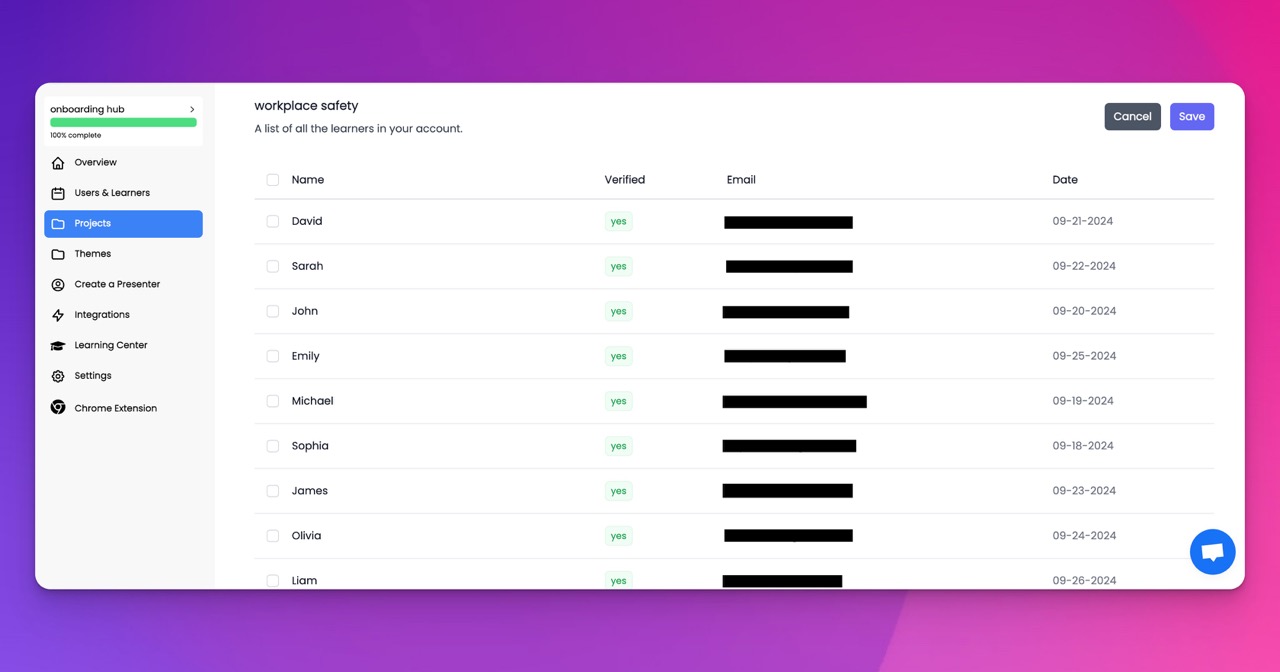🎉 Trainday now integrates with Zendesk and Hubspot 🎉 Trainday now integrates with Zendesk and Hubspot 🎉 Trainday now integrates with Zendesk and Hubspot
🎉 Trainday now integrates with Zendesk and Hubspot
🎉 Trainday now integrates with Zendesk and Hubspot
Contact
Data-Driven Training Strategies to Safeguard Oil and Gas Employees
In the high-stakes environment of the oil and gas industry, where operations are inherently hazardous, implementing effective safety measures is paramount. "Data-Driven Training Strategies to Safeguard Oil and Gas Employees" focuses on the crucial role of using precise, data-informed approaches to develop and enhance safety training programs. By systematically collecting, analyzing, and applying data from various sources such as incident reports, safety audits, and operational feedback, oil and gas companies can tailor their training initiatives to address specific risks and improve safety outcomes across all levels of operation. This blog post explores how these data-driven strategies can protect employees by significantly reducing workplace hazards.
Utilizing Comprehensive Data to Identify Safety Needs
The foundation of effective safety training in the oil and gas industry is a thorough understanding of the risks involved, achieved through detailed data analysis.
Incident and Accident Data Analysis
Analyzing data from past incidents and accidents provides invaluable insights into common hazards faced in the oil and gas sector. This analysis helps identify where training is most needed and allows companies to focus their efforts on areas with the highest risk, thereby optimizing the impact of their safety initiatives.
Feedback from Field Operations
Incorporating feedback from employees who are directly engaged in field operations provides a real-world perspective on the day-to-day challenges and risks. This feedback is essential for tailoring training programs that are not only theoretically sound but also practical and directly applicable to workers' daily tasks.
Crafting Targeted Training Modules
Armed with detailed risk assessments from data analyses, companies can create specific training modules that directly address identified safety concerns.
Scenario-Based Training
Developing training scenarios based on actual events or common situations in oil and gas operations allows workers to experience and respond to simulated emergencies in a controlled environment. These practical exercises are crucial for preparing employees to handle real-life incidents safely and effectively.
Specialized Skills Enhancement
Data often highlights specific areas where additional training can enhance safety and operational efficiency. For example, if data reveals frequent equipment malfunctions, specialized training can be provided in equipment maintenance and emergency shutdown procedures to prevent accidents and improve response times.
Enhancing Training Effectiveness with Continuous Data Integration
A continuous loop of data collection, analysis, and integration into training programs ensures that safety measures evolve in response to new challenges and technological advancements.
Regular Program Updates
As operational technologies and processes evolve, so too must safety training. Continuous updates to training programs, informed by the latest data and technological advances, ensure that workers are always equipped with up-to-date knowledge and skills.
Proactive Risk Management
Utilizing predictive analytics to identify potential future risks allows companies to proactively adjust training programs before new types of incidents occur. This forward-looking approach significantly reduces the likelihood of accidents and enhances overall workplace safety.
Strengthening Compliance and Enhancing Accountability
Data-driven training not only improves safety but also helps oil and gas companies comply with stringent industry regulations and standards.
Ensuring Compliance with Regulations
By aligning training programs with current regulatory requirements, companies can ensure they meet all legal obligations. This alignment is critical for minimizing the risk of non-compliance penalties and for maintaining operational licenses.
Improved Record-Keeping and Documentation
Robust data management systems allow for meticulous record-keeping of all training activities, certifications, and safety audits. These records are crucial for demonstrating compliance during inspections and providing evidence of the company's commitment to safety.
Conclusion
"Data-Driven Training Strategies to Safeguard Oil and Gas Employees" highlights the essential role of data in crafting effective safety training programs within the oil and gas industry. By leveraging detailed analytics to design targeted training initiatives, companies can ensure that their safety protocols address the most significant risks, thereby protecting their workforce more effectively. As the industry continues to face complex safety challenges, the adoption of data-driven training strategies will be vital for enhancing safety, ensuring compliance, and promoting a culture of continuous improvement in safety practices.
Accelerate Compliance.
Deliver OSHA-Ready Courses Instantly.
Empower your team with data-driven training solutions tailored to your industry's safety standards. Stay compliant, reduce risks, and boost productivity with AI-powered course creation.
